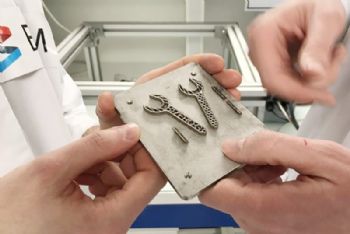
German research institute BAM (Federal Ministry of Materials Research and Testing) (
www.bam.de), Clausthal University of Technology (CUT) and the Institute of Composite Structures and Adaptive Systems of the German Aerospace Center (DLR) (
www.dlr.de), successfully tested their 3-D printing process for the aerospace industry during DLR’s 31st parabolic flight experiment.
The aim of the experiments was to show that astronauts could make their own tools or spare parts — in this case, a small spanner — during space missions, using 3-D printing technology. For the first time, the team used metallic powders in zero gravity.
Jens Günster, head of the Ceramic Processing and Biomaterials division and professor in high-performance ceramics
at CUT (
www.tu-clausthal.de), said: “We are using a brand-new layering technology; for the first time, we used metallic materials in our tests and were able to print a usable component — a small spanner.”
To enable the process to work in space, the research group has developed a method that allows the processing of metallic powders under a protective gas atmosphere; in this case, nitrogen is drawn through the powder layers to stabilise the powder bed in the absence of gravity.
Parabolic flights are used for scientific tests in microgravity and for testing ‘space’ techniques.
A DLR parabolic flight campaign usually consists of three flight days and provides about 35min of weightlessness in total (each episode lasts about 22sec); up to 40 scientists can participate in a flight, and there are usually 12 or 13 on-board
experiments.